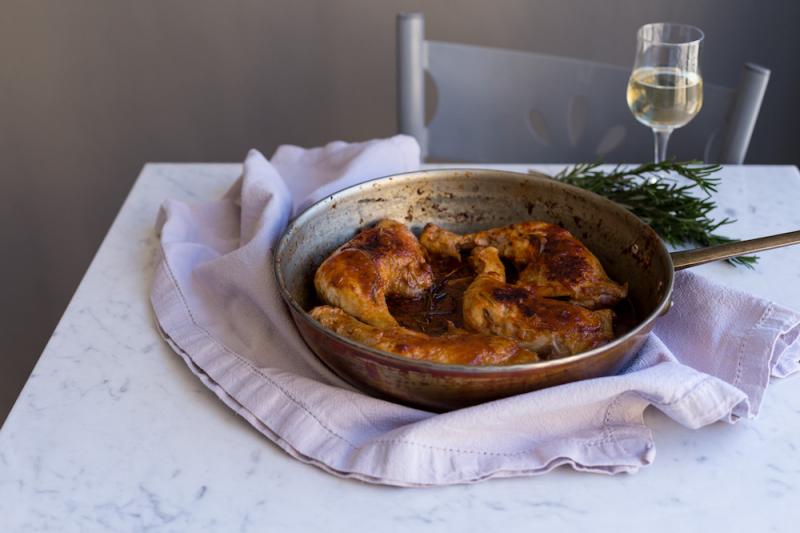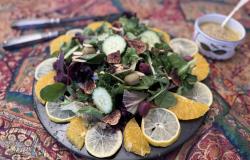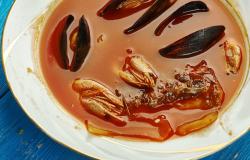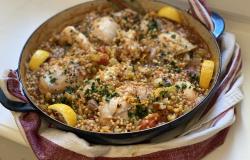Pollo in Potacchio: Le Marche’s Beloved Chicken Dish

Whenever travelling in Italy, I've always made a point of buying a cookbook which reflects the culinary traditions of the region I'm visiting. And, a few years ago, when my family and I went to the central Italian region of the Marche for our annual summer holiday, that book ended up being a large, hardcovered copy of Petra Carsetti's La Cucina Delle Marche In Oltre 450 Ricette.
Initially, I was attracted to the idea of making the region's famous deep-fried stuffed olives, its aniseed-based liqueur or its offally answer to Bologna's lasagna, vincisgrassi when buying this comprehensive, anecdote-filled regional recipe compendium. Lately though, I've been drawn to Carsetti's chapter on secondior main courses. The Marche - being a region that combines mountains, hills and a stunning stretch of Adriatic coastline - has a great variety of these to offer the visiting gastronome. Wild, farm and barnyard animals, as well as fish and seafood all play pivotal roles in the regional cuisine. One particular preparation, known as in potacchio, however, is often used to cook several types of meat and fish, such as chicken, lamb, rabbit, monkfish and stoccafisso or stockfish.
Two schools of thought exist regarding the etymology of the term 'in potacchio'. One has it that it derives from the French potage, which itself derives from the Latin potare, meaning'to drink'. Another more likely theory has it that the term comes from the Germanic pott, a possible reference to the vessel used to cook the meat or fish in.
Essentially, cooking in potacchio entails braising meat, fish or vegetables at moderate to high heat in a reduced sauce traditionally made of olive oil, white wine, garlic, onion, fresh herbs (often rosemary) and a minimal amount of tomato. The result, despite the crisp, charred skin on the outside, is surprisingly tender meat underneath. Paola Bacchia, author of the recently published cookbook Adriatico, rightly instructs readers in her introduction to her pollo in potacchio recipe, 'Don't be tempted to put the lid on the pan and reduce the heat during cooking; stand near the stove and watch the chicken pieces cook, turning them over occasionally and adding a bit of water if needed. And certainly don't be tempted to add any wine from the glass you are holding as you make this dish – that is for you to enjoy while you breathe in the lovely aroma of the garlicky chicken'.
Carsetti, and another Italian food writer whose pollo in potacchio recipe which inspired me greatly, Anna Gosetti Della Salda (author of Le Ricette Regionali Italiane), certainly concur about the importance of using higher heat to cook this dish. And, after several takes at making this dish for my family, I'm becoming more used to stepping back from my stovetop and refraining from reducing the heat. Of course, if the sauce reduces too much or the chicken pieces stick to your pan, you can add a spoonful or two of hot water, but no more.
This dish cooks beautifully in the copper pans Carsetti's aunt Anna cooked with, cleaned immaculately and hung religiously on her kitchen wall everyday. Incidentally, zia or aunt Anna was an expert at making pollo in potacchio. Otherwise, choose an enamelled cast iron pan. Whatever type of cooking vessel you opt for, ensure that it is wide enough to contain all the pieces of chicken at one level.
Serves 4 as a main course
Wash the chicken pieces and pat dry with a clean tea-towel.
Pour enough olive oil to coat a saucepan large enough to fit all the chicken pieces. Heat the saucepan and add the chicken. Cook on one side for 4-5 minutes or until the skin browns, then turn over and cook for another 4-5 minutes to brown the other side. Remove chicken from saucepan and set aside.
Reduce the heat and add the crushed garlic and minced onion. Saute until the garlic releases its aroma and the onion softens and is translucent, about 5-7 minutes. Return browned chicken pieces to the saucepan, along with 2-3 sprigs of fresh rosemary. Raise the heat, add the white wine and allow it to sizzle and evaporate for few minutes. Add the tomato puree and a generous seasoning of salt and pepper.
Continue to cook the chicken pieces, on moderate to high heat, turning them over every ten minutes. If the wine and tomato-based liquid becomes too dry or the chicken is sticking to the bottom, add a spoonful or two of hot water. Cook until the chicken pieces are pleasantly charred and the juices of their meat run clear when prodded with a fork. Depending on their size, this could take 30 – 50 minutes.
Arrange the charred chicken pieces on a warmed serving platter and pour the remaining sauce from the pan on top. Serve with mash or roast potatoes and lots of crusty, country bread to fare la scarpetta or mop up the delicious sauce.





